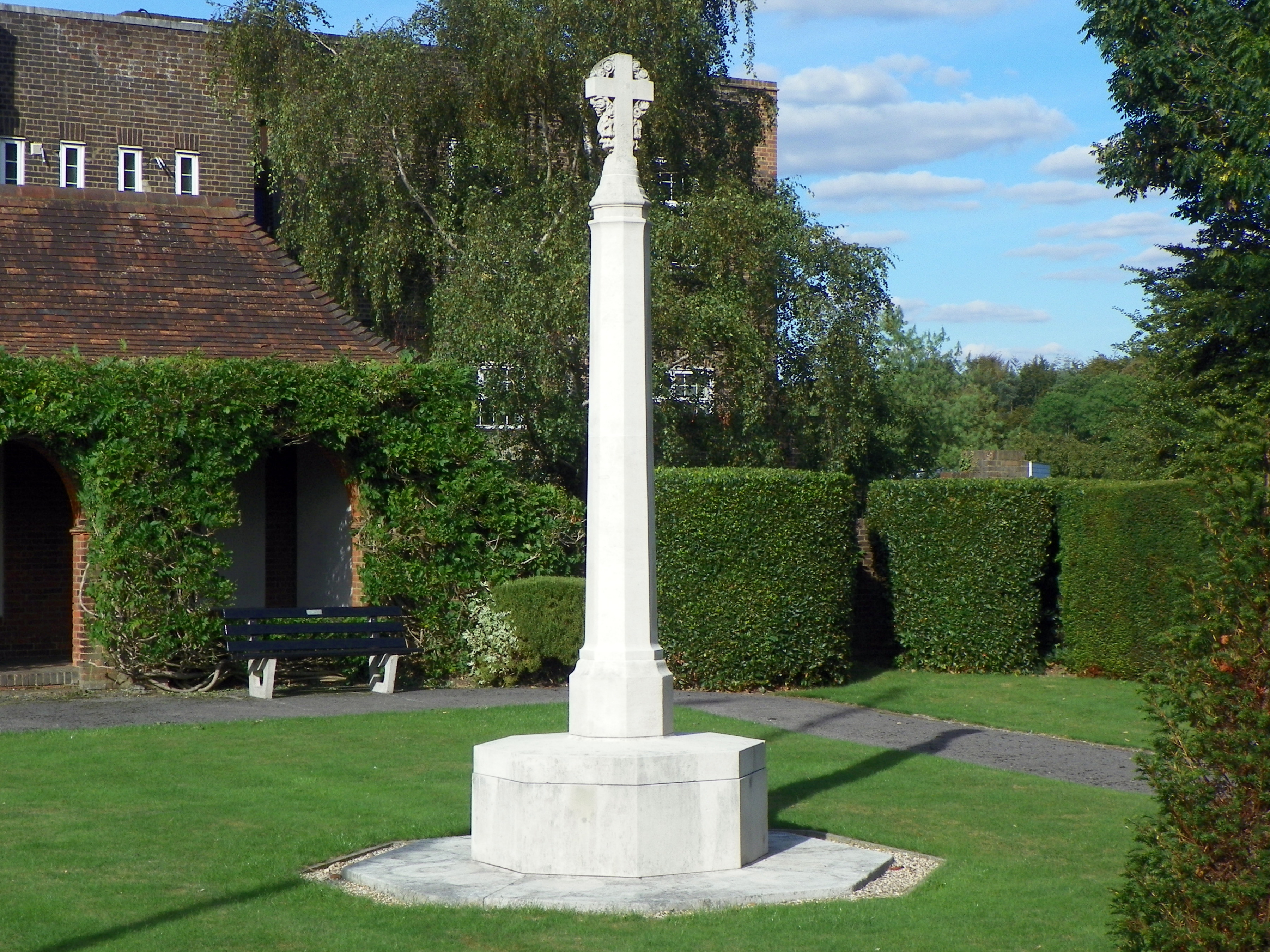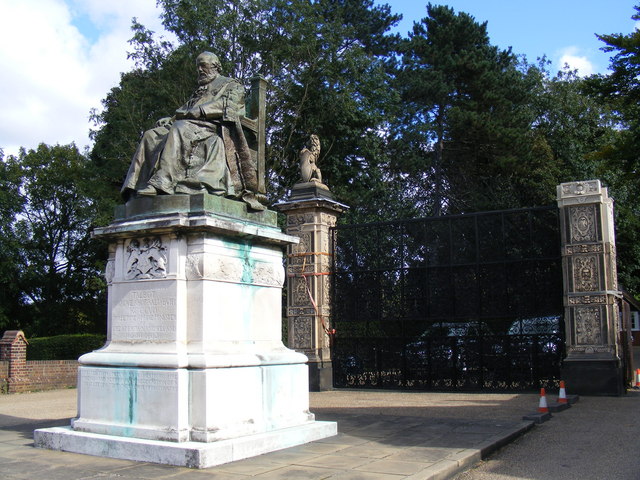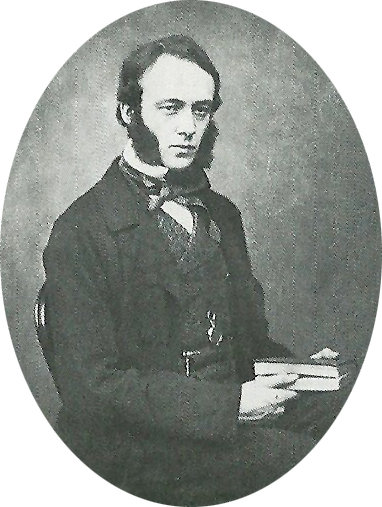|
Hatfield War Memorial
The Hatfield War Memorial is a war memorial beside the Great North Road (Great Britain), Great North Road in Hatfield, Hertfordshire. It was one of 24 war memorials in England designed by Sir Herbert Baker, that were designated as a national collection by Historic England in 2017. The memorial is located near the gates of Hatfield House, and close to Hatfield railway station. It was unveiled in 1921, to commemorate 139 men from Hatfield killed on service during the First World War. A brick pavilion records the names of the dead, with further names added after the Second World War. The memorial comprises a Portland stone memorial cross, standing within a garden surrounded by brick walls to the north, west and south sides, and a yew hedge to the east, with an entrance gate in the wall to the south. Portland stone tablets with dedications listing the names of the dead are located in a brick shelter pavilion to the north side of the garden. The memorial cross is a typical Baker desi ... [...More Info...] [...Related Items...] OR: [Wikipedia] [Google] [Baidu] |
Hatfield War Memorial
The Hatfield War Memorial is a war memorial beside the Great North Road (Great Britain), Great North Road in Hatfield, Hertfordshire. It was one of 24 war memorials in England designed by Sir Herbert Baker, that were designated as a national collection by Historic England in 2017. The memorial is located near the gates of Hatfield House, and close to Hatfield railway station. It was unveiled in 1921, to commemorate 139 men from Hatfield killed on service during the First World War. A brick pavilion records the names of the dead, with further names added after the Second World War. The memorial comprises a Portland stone memorial cross, standing within a garden surrounded by brick walls to the north, west and south sides, and a yew hedge to the east, with an entrance gate in the wall to the south. Portland stone tablets with dedications listing the names of the dead are located in a brick shelter pavilion to the north side of the garden. The memorial cross is a typical Baker desi ... [...More Info...] [...Related Items...] OR: [Wikipedia] [Google] [Baidu] |
Latin Cross
A Latin cross or ''crux immissa'' is a type of cross in which the vertical beam sticks above the crossbeam, with the three upper arms either equally long or with the vertical topmost arm shorter than the two horizontal arms, and always with a much longer bottom arm. If displayed upside down it is called St. Peter's Cross, because he was reputedly executed on this type of cross.Joyce Mori, ''Crosses of Many Cultures'' (Harrisburg, PA: Morehouse Publishing, 1998), p. 32 When displayed sideways it is called St. Philip's cross for the same reason. History In a broad sense, the Latin cross is used to represent all of Christianity and Christendom, given that it teaches that Jesus sacrificed himself for humanity upon it, atoning for the sins of the world. It is especially used among the denominations of Western Christianity, including the Roman Catholic tradition and several Protestant traditions, such as Lutheranism, Moravianism, Anglicanism, Methodism, and Reformed Christianity, ... [...More Info...] [...Related Items...] OR: [Wikipedia] [Google] [Baidu] |
A Famous Victorian - Geograph
A, or a, is the first letter and the first vowel of the Latin alphabet, used in the modern English alphabet, the alphabets of other western European languages and others worldwide. Its name in English is ''a'' (pronounced ), plural ''aes''. It is similar in shape to the Ancient Greek letter alpha, from which it derives. The uppercase version consists of the two slanting sides of a triangle, crossed in the middle by a horizontal bar. The lowercase version can be written in two forms: the double-storey a and single-storey ɑ. The latter is commonly used in handwriting and fonts based on it, especially fonts intended to be read by children, and is also found in italic type. In English grammar, " a", and its variant " an", are indefinite articles. History The earliest certain ancestor of "A" is aleph (also written 'aleph), the first letter of the Phoenician alphabet, which consisted entirely of consonants (for that reason, it is also called an abjad to distinguish it fro ... [...More Info...] [...Related Items...] OR: [Wikipedia] [Google] [Baidu] |
Prime Minister Of The United Kingdom
The prime minister of the United Kingdom is the head of government of the United Kingdom. The prime minister advises the sovereign on the exercise of much of the royal prerogative, chairs the Cabinet and selects its ministers. As modern prime ministers hold office by virtue of their ability to command the confidence of the House of Commons, they sit as members of Parliament. The office of prime minister is not established by any statute or constitutional document, but exists only by long-established convention, whereby the reigning monarch appoints as prime minister the person most likely to command the confidence of the House of Commons; this individual is typically the leader of the political party or coalition of parties that holds the largest number of seats in that chamber. The prime minister is '' ex officio'' also First Lord of the Treasury, Minister for the Civil Service and the minister responsible for national security. Indeed, certain privileges, such as List ... [...More Info...] [...Related Items...] OR: [Wikipedia] [Google] [Baidu] |
Robert Gascoyne-Cecil, 3rd Marquess Of Salisbury
Robert Arthur Talbot Gascoyne-Cecil, 3rd Marquess of Salisbury (; 3 February 183022 August 1903) was a British statesman and Conservative politician who served as Prime Minister of the United Kingdom three times for a total of over thirteen years. He was also Foreign Secretary for much of his tenure, and during his last two years of office he was Lord Keeper of the Privy Seal. He avoided alignments or alliances, maintaining the policy of "splendid isolation". Lord Robert Cecil, also known as Lord Salisbury, was first elected to the House of Commons in 1854 and served as Secretary of State for India in Lord Derby's Conservative government 1866–1867. In 1874, under Disraeli, Salisbury returned as Secretary of State for India, and, in 1878, was appointed foreign secretary, and played a leading part in the Congress of Berlin. After Disraeli's death in 1881, Salisbury emerged as Conservative leader in the House of Lords, with Sir Stafford Northcote leading the party in the Comm ... [...More Info...] [...Related Items...] OR: [Wikipedia] [Google] [Baidu] |
Listed Building
In the United Kingdom, a listed building or listed structure is one that has been placed on one of the four statutory lists maintained by Historic England in England, Historic Environment Scotland in Scotland, in Wales, and the Northern Ireland Environment Agency in Northern Ireland. The term has also been used in the Republic of Ireland, where buildings are protected under the Planning and Development Act 2000. The statutory term in Ireland is " protected structure". A listed building may not be demolished, extended, or altered without special permission from the local planning authority, which typically consults the relevant central government agency, particularly for significant alterations to the more notable listed buildings. In England and Wales, a national amenity society must be notified of any work to a listed building which involves any element of demolition. Exemption from secular listed building control is provided for some buildings in current use for worship, ... [...More Info...] [...Related Items...] OR: [Wikipedia] [Google] [Baidu] |
Lord William Cecil (bishop)
Lord Rupert Ernest William Gascoyne-Cecil (9 March 1863 – 23 June 1936) was Bishop of Exeter from 1916 to 1936. He was the second son of the 3rd Marquess of Salisbury. Educated at Eton and Oxford, he was rector of Hatfield for 28 years before being appointed a bishop. Married in 1887, he had three daughters and four sons, three of whom were killed in the First World War. As bishop he was generally liked, but had a reputation for eccentricity. Biography Cecil was born at Hatfield House, the second son of Lord Robert Cecil, third (but second surviving) son of the 2nd Marquess of Salisbury, and Lady Robert Cecil, née Georgina Alderson. In 1865, his father's elder brother died without an heir, his father thereby became Viscount Cranborne as heir apparent to the 2nd Marquess, and Cecil became The Hon. William Cecil. In 1868, his father succeeded as 3rd Marquess, and Cecil became Lord William Cecil. His elder brother was James, Viscount Cranborne (later 4th Marquess), and his ... [...More Info...] [...Related Items...] OR: [Wikipedia] [Google] [Baidu] |
Bishop Of Exeter
The Bishop of Exeter is the ordinary of the Church of England Diocese of Exeter in the Province of Canterbury. Since 30 April 2014 the ordinary has been Robert Atwell.Diocese of Exeter – Election of new Bishop of Exeter formally confirmed (Accessed 9 May 2014) From the first until the sixteenth century the Bishops of Exeter were in full communion with the |
Hertfordshire Regiment
The Hertfordshire Regiment was a line infantry regiment of the Territorial Army, part of the British Army. Originating in units of Rifle Volunteers formed in 1859, the regiment served in the Second Anglo-Boer War and the First and Second World Wars before losing its separate identity in 1961. Its lineage is continued today by the Royal Anglian Regiment. Pre 1908 The origins of the regiment lay in the Rifle Volunteer Corps of the nineteenth century. These units were raised across Britain during a period of heightened Anglo-French tension resulting from the Second Italian War of Independence on the Continent. In Hertfordshire the newly formed companies of rifle volunteers were grouped into two separate administrative battalions of the Hertfordshire Rifle Volunteers. In 1880 these units were rearranged in two battalion-sized units titled 1st and 2nd Hertfordshire Rifle Volunteer Corps. The following year, as a result of the Childers Reforms, the county lost its regular regim ... [...More Info...] [...Related Items...] OR: [Wikipedia] [Google] [Baidu] |
Lord Lieutenant Of Hertfordshire
This is an incomplete list of people who have served as Lord Lieutenant of Hertfordshire. From 1660 the office holder was also Custos Rotulorum of Hertfordshire. *William Parr, 1st Marquess of Northampton 1553 – * Sir Ralph Sadleir 1570–? *Henry Carey, 1st Baron Hunsdon 1583–1585 *Robert Dudley, 1st Earl of Leicester 3 July 1585 – 4 September 1588 *William Cecil, 1st Baron Burghley 31 December 1588 – 4 August 1598 *''vacant'' *Robert Cecil, 1st Earl of Salisbury 5 August 1605 – 24 May 1612 *William Cecil, 2nd Earl of Salisbury 10 July 1612 – 1642 ''jointly with'' * Charles Cecil, Viscount Cranborne 31 March 1640 – 1642 *''Interregnum'' *Arthur Capell, 1st Earl of Essex 26 July 1660 – 1681 *John Egerton, 2nd Earl of Bridgewater 10 February 1681 – 26 October 1686 *Laurence Hyde, 1st Earl of Rochester 18 November 1686 – 1688 *Charles Talbot, 1st Duke of Shrewsbury 4 April 1689 – 1691 *Algernon Capell, 2nd Earl of Essex 3 February 1692 – 10 January 1710 *Willia ... [...More Info...] [...Related Items...] OR: [Wikipedia] [Google] [Baidu] |
Thomas Brand, 3rd Viscount Hampden
Brigadier General Thomas Walter Brand, 3rd Viscount Hampden (29 January 1869 – 4 September 1958) was a British peer and soldier, the son of the 2nd Viscount Hampden. Education He was educated at Eton College and Trinity College, Cambridge. Marriage and family On 29 April 1899, he married Lady Katharine Mary Montagu-Douglas-Scott (a daughter of the 6th Duke of Buccleuch), and they had eight children. Military career Brand served as an officer in the Hertfordshire Regiment, and for 10th Royal Hussars during the Second Boer War in South Africa in 1899. Then was private secretary to Earl Cawdor in 1905; then a brigadier-major in the British Armed Forces from 1908 to 1910. Later he served as commanding officer of the 1st Battalion from February 1913. Following the outbreak of the First World War, the Hertfordshires were deployed to the Western Front and Brand remained in command until January 1915. Subsequently, he was promoted to brigadier general and appointed to command the ... [...More Info...] [...Related Items...] OR: [Wikipedia] [Google] [Baidu] |
James Gascoyne-Cecil, 4th Marquess Of Salisbury
James Edward Hubert Gascoyne-Cecil, 4th Marquess of Salisbury, (23 October 1861 – 4 April 1947), known as Viscount Cranborne from 1868 to 1903, was a British statesman. Background and education Born in London, Salisbury was the eldest son of Robert Gascoyne-Cecil, 3rd Marquess of Salisbury, who served as British Prime Minister, by his wife Georgina (''née'' Alderson). The Right Reverend Lord William Cecil, Lord Cecil of Chelwood and Lord Quickswood were his younger brothers, and Prime Minister Arthur Balfour his first cousin. ''Burke's Peerage and Baronetage'', 106th Edn, 1999: 'Salisbury'. He was educated at Eton and University College, Oxford, graduating BA in 1885. Political career He started public life early, being of a very young age when he accompanied his father to the 1876–1877 Constantinople Conference and a year later to the Congress of Berlin. Lord Cranborne sat as Conservative Member of Parliament for Darwen, then called North-East Lancashire, from 1885 ... [...More Info...] [...Related Items...] OR: [Wikipedia] [Google] [Baidu] |




